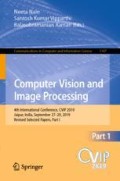Abstract
Structural Health Monitoring (SHM) aims to give a diagnosis of the “state” of the constituent materials, different parts, and full assembly of the structure as a whole. The continuous real-time diagnosis allows optimal use of the structure, a minimized downtime, and the avoidance of catastrophic failures. A 1-Dimensional Convolutional Neural Network (CNN) approach for SHM is proposed in this paper which can minimize human involvement, and thus improving safety and reliability. An experiment pipeline is designed for analysis of Phase I-AISC benchmark structure. The pipeline comprises of four phases based analysis where the first phase involves multiclass classification of vibration data based on the type of damage in the structure. Average accuracy of 96.11% was obtained for all the nodes of the structure. The second phase uses the maximum damage and undamaged data to train the model and compute the level of overall damage in the structure by testing the trained model for different types of damage patterns. The obtained result accurately detects the pattern for increasing instances of damage using the probability of damage (PoD) parameter. The third phase is used to figure out damage localization for different nodes. The first three phases use a distributed SHM approach where each node has an independently trained model whereas in the fourth approach a unanimously trained single model for the merged dataset, as per hypothesis, was prepared to predict damage or undamaged state for data obtained from any node of the structure. The hypothesis was rightly proven with around 97.89% probability of classification (PoC) values obtained.
Access this chapter
Tax calculation will be finalised at checkout
Purchases are for personal use only
References
Abdeljaber, O., Avci, O., Kiranyaz, M.S., Boashash, B., Sodano, H., Inman, D.J.: 1-D CNN’s for structural damage detection: verification on a structural health monitoring benchmark data. Neurocomputing (2017). https://doi.org/10.1016/j.neucom.2017.09.069
Abdeljaber, O., et al.: Real-time vibration-based structural damage detection using one-dimensional convolutional neural networks. J. Sound Vib. (2016). https://doi.org/10.1016/j.jsv.2016.10.043
Lee, J.J., Lee, J.W., Yi, J.H., Yun, C.B., Jung, H.Y.: Neural networks-based damage detection for bridges considering errors in baseline finite element models. J. Sound Vib. 280, 555–578 (2005). https://doi.org/10.1016/j.jsv.2004.01.003
Meruane, V.: Online sequential extreme learning machine for vibration-based damage assessment using transmissibility data. J. Comput. Civil. Eng. 30, 4015042 (2015). https://doi.org/10.1061/(ASCE)CP.1943-5487.0000517
Ince, T., Kiranyaz, S., Eren, L., Askar, M., Gabbouj, M.: Real-time motor fault detection by 1-D convolutional neural networks. IEEE Trans. Ind. Electron. 63, 7067–7075 (2016). https://doi.org/10.1109/TIE.2016.2582729
Alampalli, S., Ettouney, M.: Structural identification, damage identification, and structural health monitoring. In: Proceedings SPIE - International Society Optical Engineering (2007). https://doi.org/10.1117/12.715000
Catbas, F.N.: Structural health monitoring: applications and data analysis. In: Structural Health Monitoring of Civil Infrastructure Systems (2009). https://doi.org/10.1533/9781845696825.1
Zhang, H., Yoshie, O.: Improving human activity recognition using subspace clustering. In: 2012 International Conference on Machine Learning and Cybernetics (ICMLC), July 2012, vol. 3, pp. 1058–1063 (2012)
Kiranyaz, S., Ince, T., Gabbouj, M.: Real-time patient-specific ECG classification by 1-D convolutional neural networks. IEEE Trans. Biomed. Eng. 63, 664–675 (2016). https://doi.org/10.1109/TBME.2015.2468589
Dackermann, U., Li, J., Samali, B.: Dynamic-based damage identification using neural network ensembles and damage index method. Adv. Struct. Eng. 13, 1001–1016 (2010). https://doi.org/10.1260/1369-4332.13.6.1001
Chun, P., Yamashita, H., Furukawa, S.: Bridge damage severity quantification using multipoint acceleration measurement and artificial neural networks. Shock Vib. 2015, 1–11 (2015)
Black, C.J., Ventura, C.E.: Blind test on damage detection of a steel frame structure. In: Proceedings 16th International Modal Analysis Conference, IMAC XVI, Santa Barbara, California, pp. 623–629 (1998)
Balageas, D., Fritzen, C.-P., Güemes, A.: Structural health monitoring. Struct. Heal. Monit. (2006). https://doi.org/10.1098/rsta.2006.1928
Santos, A., Figueiredo, E., Silva, M.F.M., Sales, C.S., Costa, J.C.W.A.: Machine learning algorithms for damage detection: kernel-based approaches. J. Sound Vib. 363, 584–599 (2016). https://doi.org/10.1016/j.jsv.2015.11.008
Wen, C.M., Hung, S.L., Huang, C.S., Jan, J.C.: Unsupervised fuzzy neural networks for damage detection of structures. Struct. Control Heal. Monit. 14, 144–161 (2007). https://doi.org/10.1002/stc.116
Jiang, S.F., Zhang, C.M., Koh, C.G.: Structural damage detection by integrating data fusion and probabilistic neural network. Adv. Struct. Eng. 9, 445–458 (2006). https://doi.org/10.1260/136943306778812787
Johnson, E., Lam, H.F., Katafygiotis, L.S., Beck, J.L.: The phase I IASC-ASCE structural health monitoring benchmark problem using simulated data ASCE. J. Eng. Mech. 130 (2004). https://doi.org/10.1061/(ASCE)0733-9399(2004)130:1(3)
Figueiredo, E., Park, G., Farrar, C.R., Worden, K., Figueiras, J.: Machine learning algorithms for damage detection under operational and environmental variability. Struct. Heal. Monit. 10, 559–572 (2011). https://doi.org/10.1177/1475921710388971
Busca, G., Cigada, A., Zappa, E.: Vision device applied to damage identification in civil engineer structures. In: Wicks, A. (ed.) Structural Health Monitoring, Volume 5. CPSEMS, pp. 195–206. Springer, Cham (2014). https://doi.org/10.1007/978-3-319-04570-2_22
Abdeljaber, O., Avci, O.: Nonparametric structural damage detection algorithm for ambient vibration response: utilizing artificial neural networks and self-organizing maps. J. Archit. Eng. 22 (2016). https://doi.org/10.1061/(asce)ae.1943-5568.0000205
Boashash, B., Ouelha, S.: Automatic signal abnormality detection using time-frequency features and machine learning: a newborn EEG seizure case study. Knowl. Based Syst. 106, 38–50 (2016). https://doi.org/10.1016/j.knosys.2016.05.027
Scherer, D., Müller, A., Behnke, S.: Evaluation of pooling operations in convolutional architectures for object recognition. In: Diamantaras, K., Duch, W., Iliadis, L.S. (eds.) ICANN 2010. LNCS, vol. 6354, pp. 92–101. Springer, Heidelberg (2010). https://doi.org/10.1007/978-3-642-15825-4_10
Sohn, H., Farrar, C.R., Hunter, N.F., Worden, K.: Structural health monitoring using statistical pattern recognition techniques (2001). https://doi.org/10.1115/1.1410933
Author information
Authors and Affiliations
Corresponding author
Editor information
Editors and Affiliations
Rights and permissions
Copyright information
© 2020 Springer Nature Singapore Pte Ltd.
About this paper
Cite this paper
Sarawgi, Y., Somani, S., Chhabra, A., Dhiraj (2020). Nonparametric Vibration Based Damage Detection Technique for Structural Health Monitoring Using 1D CNN. In: Nain, N., Vipparthi, S., Raman, B. (eds) Computer Vision and Image Processing. CVIP 2019. Communications in Computer and Information Science, vol 1147. Springer, Singapore. https://doi.org/10.1007/978-981-15-4015-8_13
Download citation
DOI: https://doi.org/10.1007/978-981-15-4015-8_13
Published:
Publisher Name: Springer, Singapore
Print ISBN: 978-981-15-4014-1
Online ISBN: 978-981-15-4015-8
eBook Packages: Computer ScienceComputer Science (R0)

